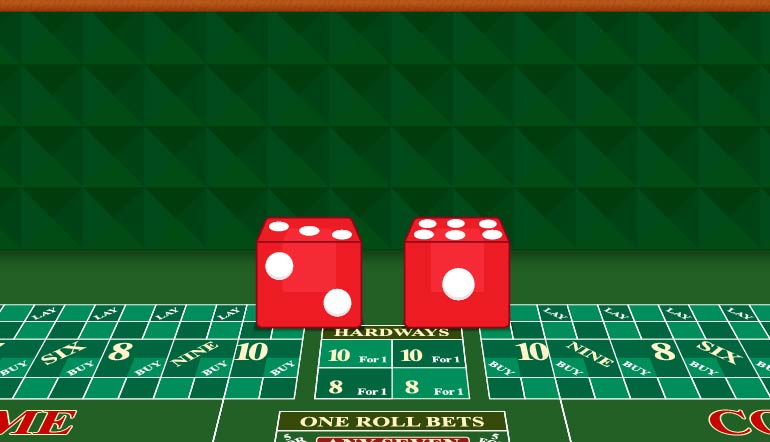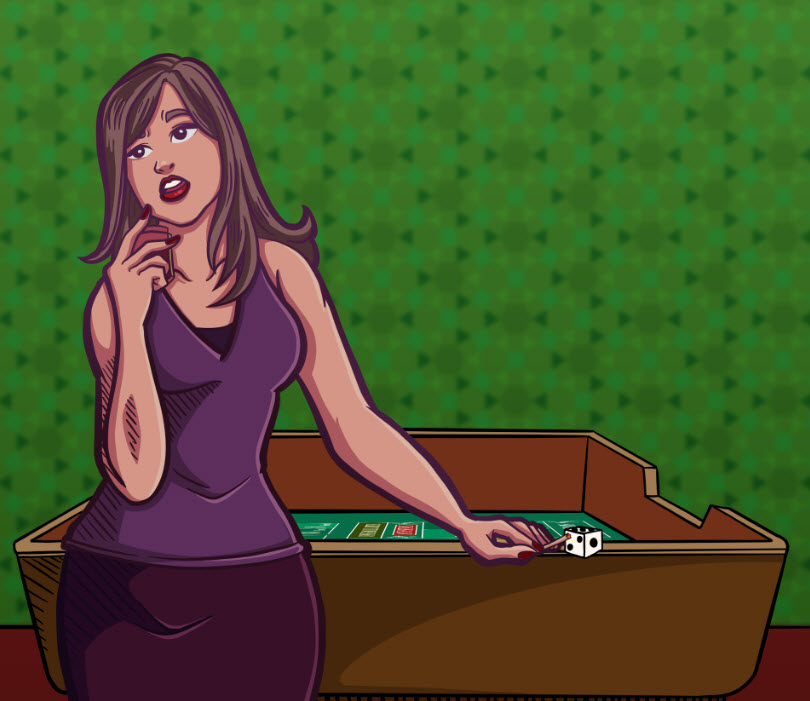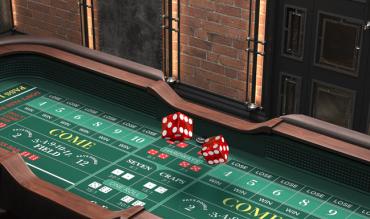Craps is the only game where the casino gives you the means of winning and the outcome is quite literally in your hands (sort of). The casino gives you two dice and actually allows you to throw them. There is no other casino game where the player has control. He can’t shuffle and deal the cards in blackjack or pai gow poker, nor can he spin the little white ball around the roulette wheel.
Craps is the only casino game where this happens. Craps also has a large array of bets that can be made. For this reason, a big portion of the questions received are about craps.
Craps Basics
For those who are unfamiliar with craps, here is a very brief description of the game.
The most common bet in craps is the pass line bet. Once a shooter makes a pass line bet, if the first roll is a 7 or 11, the pass line bet is a winner and the bet is paid 1 to 1. If the roll is a 2, 3, or 12, the pass line bet is a loser and the bet is taken by the dealer. If the roll is any other number (4, 5, 6, 8, 9, or 10) it becomes the “point number.” The shooter must then roll that number before a 7 to win the bet. If a 7 appears before that number, the bet is lost.
Craps players also have the option of making a don’t pass bet which is essentially the opposite of the pass line bet – a 7 or 11 is a loser, a 2 or 3 is a winner, a 12 is a push (neither a winner nor a loser). Any other number becomes the point number and the shooter must roll a 7 before that number to win the don’t pass bet.
Come and don’t come bets work like pass and don’t pass bets, except they are made when a point is already established.
A free odds bet can be added to a pass or don’t pass as well as a come or don’t come bet. The amount of the odds bet is limited by the casino and varies from casino to casino and usually from table to table in the same casino.

One of the major areas of confusion in the game of craps centers around betting both pass (or come) and don’t pass (or don’t come).
Consider the following situation which a reader sent me.
The shooter makes a $5 Don’t Pass bet. He rolls a 6. Should he then make a $5 Come bet (since 6 has been established as the point) and back it with $15 in odds, or should he simply just leave his original Don’t Pass bet with no odds?
In order to properly answer the question, some background is in order. As stated previously, for every pass/don’t pass and come/don’t come bet, there are two phases. The roll immediately after the bet is placed and all subsequent rolls (assuming the first roll is not a 2, 3, 7, 11, or 12). On the initial roll, a pass line (or come) bettor has eight ways to win.
- Six ways to make a 7 (1-6, 6-1, 2-5, 5-2, 3-4, 4-3)
- Two ways to make an 11 (5-6, 6-5)
There are four ways to lose.
- One way to make a 2, (1-1)
- Two ways to make a 3 (1-2, 2-1)
- One way to make a 12 (6-6)
Eight ways to win versus four ways to lose. That is a 2-to-1 player advantage.
Once a point is established, however, the pass/come bet advantage swings to the house.
On the initial roll, a don’t pass/don’t come bettor has eight ways to lose.
- Six ways to make a 7
- Two ways to make an 11
He has three ways to win.
- One way to make a 2
- Two ways to make a 3
And, he has one way to push with a 12.
It is a losing proposition for the don’t pass/don’t come player. Once a point is established, however, the advantage swings to the don’t bettor.
The Situation with 6 and 8
Most craps players know that the odds of rolling a 6 or 8 are the best of all the point numbers. For this reason, some feel they would rather not play a don’t pass or don’t come bet when the point is a 6 or 8. They feel the odds of winning the bet are not high enough, so they try to offset the bet by making a pass or come bet. A short analysis of this logic follows.
Granted, the odds of winning a don’t bet when the point is a 6 or 8 is the lowest of any point number, but the important fact is that the player still has the advantage. There are six ways to throw a 7 and only five ways to throw a 6 (or 8). There is absolutely no reason to make any additional bet. The player already has the advantage!
I have seen players take down don’t come bets when the point is a 6 or 8 – and the casino allows it. Think about this. Would the casino allow the player to take the bets down if it was advantageous to the house? They don’t allow a player to take a pass line bet down strictly because the house has the advantage once a point is established.

So, what should a don’t player do if a 6 or 8 becomes the point?
My advice is to be happy that you have the advantage over the house. Add an odds bet (that you can afford) to the don’t pass bet and ride the hand to its conclusion.
There is no need to add a hedge bet. In fact, there is a house edge on the additional pass or come bet. Remember, the costly part of a pass or come bet is after the point is established, whereas the costly part of a don’t bet is the initial roll. If you decide to make a don’t pass or don’t come bet, be thankful you made it past the initial roll.
Most craps players have almost no knowledge of house edges. This lack of knowledge can cost them money. If you simply are playing for the excitement of the game and you have the money to lose, then maybe the lack of knowledge is okay. But, if you want to have the best chance of winning, knowledge is power. Learn the game and apply the knowledge.


